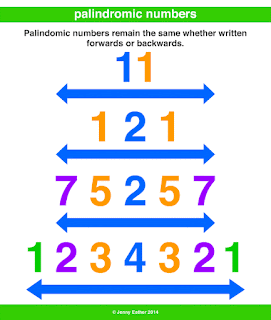Palindromic Number
- PALINDROMIC NUMBER
- A palindromic number or numeral palindrome is a number that remains the same when its digits are reversed. Like 16461, for example, it is "symmetrical".
- The term palindromic is derived from palindrome, which refers to a word
- (such as rotor or racecar) whose spelling is unchanged when its letters are reversed.The first 30 palindromic numbers (in decimal) are:
- 0, 1, 2, 3, 4, 5, 6, 7, 8, 9, 11, 22, 33, 44, 55, 66, 77, 88, 99, 101, 111, 121, 131, 141, 151, 161, 171, 181, 191, 202, … and so on
-
- Although palindromic numbers are most often considered in the decimal system, the concept of palindromicity can be applied to the natural numbers in any numeral system. Consider a number n > 0 in base b ≥ 2, where it is written in standard notation with k+1 digits ai as:
-
with, as usual, 0 ≤ ai < b for all i and ak ≠ 0. Then n is palindromic if and only if ai = ak−i for all i. zero is written 0 in any base and is also palindromic by definition.
C Program to Check Whether a Number is Palindrome or Not
- This program reverses an integer (entered by the user) using while loop. Then, if statement is used to check whether the reversed number is equal to the original number or not.
#include <stdio.h> int main() { int n, reversedInteger = 0, remainder, originalInteger; printf("Enter an integer: "); scanf("%d", &n); originalInteger = n; // reversed integer is stored in variable while( n!=0 ) { remainder = n%10; reversedInteger = reversedInteger*10 + remainder; n /= 10; } // palindrome if orignalInteger and reversedInteger are equal if (originalInteger == reversedInteger) printf("%d is a palindrome.", originalInteger); else printf("%d is not a palindrome.", originalInteger); return 0; }- Output:
Enter an integer: 2002 2002 is a palindrome.




Comments
Post a Comment